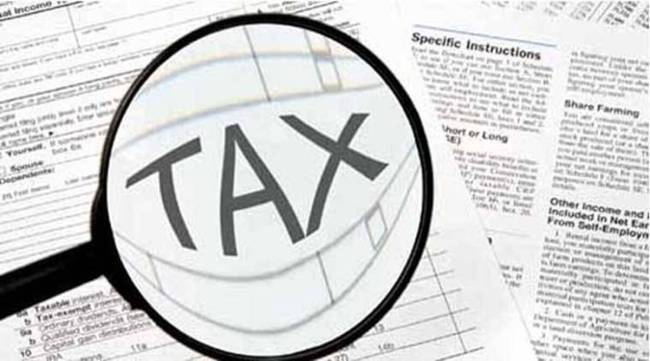Opinion Data reveals healthy direct tax collection, little risk of not meeting fiscal deficit target
The momentum in the economy is expected to slow down in the second half of the year. As per the RBI's projections, GDP growth is likely to fall from 7.2 per cent in the first half of the year to 5.9 per cent in the second half.
 The disaggregated data shows that the sharp uptick in collections has been driven by healthy direct tax revenues. So far this year, direct taxes have grown at 26.6 per cent, while indirect taxes have grown at a subdued 7.5 per cent.
The disaggregated data shows that the sharp uptick in collections has been driven by healthy direct tax revenues. So far this year, direct taxes have grown at 26.6 per cent, while indirect taxes have grown at a subdued 7.5 per cent. Data on central government finances released a few days ago by the Controller General of Accounts paints a healthy picture of the government’s finances, dousing concerns over tax collections falling short of expectations. At the aggregate level, the Centre’s gross tax collections, which had been subdued in the first four months of the year (April-July), grew at a staggering pace in August. As a consequence, tax collections in the year so far (April-August) have grown at a healthy pace of 16.5 per cent. This is higher than the growth that was factored in the Union budget. While the momentum in collections may moderate in the second half, the fiscal arithmetic so far looks manageable.
The disaggregated data shows that the sharp uptick in collections has been driven by healthy direct tax revenues. So far this year, direct taxes have grown at 26.6 per cent, while indirect taxes have grown at a subdued 7.5 per cent.
Under the rubric of direct taxes, income tax collections have grown by a robust 35.6 per cent, while corporate tax collections, which till July were lower than levels seen last year, have grown handsomely in August, pushing up overall growth this year to 15 per cent. On the indirect tax side, goods and services tax collections have continued to hold steady. GST collection rose to Rs 1.62 lakh crore in September, up 10.2 per cent over those last year.
Excise collections though are lower than levels seen last year. Revenue from disinvestment also continues to disappoint. As against a budgeted target of Rs 61,000 crore, the government has so far garnered only Rs 6,949 crore through this route. However, robust growth of non-tax revenue, driven largely by the higher-than-budgeted dividend from the RBI, could in part help offset this shortfall. On the expenditure side, the government has maintained its spending momentum — capital spending is up 48 per cent so far this year. However, some expect the momentum to moderate in the second half of the year as the country approaches the national elections.
The momentum in the economy is expected to slow down in the second half of the year. As per the RBI’s projections, GDP growth is likely to fall from 7.2 per cent in the first half of the year to 5.9 per cent in the second half. This could have implications for the government’s tax revenues. And on the expenditure side, there is the possibility that additional allocations will have to be made for NREGA. However, as per analysts, there is little risk of the government not meeting its fiscal deficit target for the year. The government’s market borrowing numbers of Rs 6.55 lakh crore for the second half of the year also seems to indicate so.






